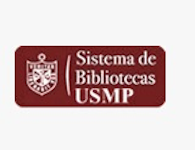| dc.contributor.author | Beltran, Brady E. | |
| dc.contributor.author | Castro, Denisse | |
| dc.contributor.author | De la Cruz-Vargas, Jhony A. | |
| dc.contributor.author | Cotrina, Esther | |
| dc.contributor.author | Gallo, Aly | |
| dc.contributor.author | Sotomayor, Eduardo M. | |
| dc.contributor.author | Castillo, Jorge J. | |
| dc.date.accessioned | 2020-05-27T20:37:44Z | |
| dc.date.available | 2020-05-27T20:37:44Z | |
| dc.date.issued | 2019-02-03 | |
| dc.identifier.citation | Beltran BE., Castro D., De la Cruz JA., Cotrina E., Gallo A., Sotomayor EM., et al. The neutrophil‐lymphocyte ratio is prognostic in patients with early stage aggressive peripheral T cell lymphoma. British Journal of Haematology. 2019; 184: 650-653 | es_PE |
| dc.identifier.uri | https://hdl.handle.net/20.500.12727/6103 | |
| dc.description.abstract | Peripheral T cell lymphoma (PTCL) is rare in the United States and Europe, accounting for about 10% of all lymphoma cases. In Latin America, PTCL accounts for about 15–20% of all lymphoma cases (Laurini et al, 2012). Aggressive subtypes of PTCL carry a poor prognosis with a 5‐year overall survival (OS) of approximately 30%, and include unspecified (PTCLU), anaplastic large cell lymphoma (ALCL) and angioimmunoblastic lymphoma, among others (Vose et al, 2008). The International Prognostic Index (IPI) and the Prognostic Index for PTCLU (PIT) scoring systems are powerful risk‐stratification tools that have been validated in patients with aggressive PTCL. The prognosis of aggressive PTCL patients is, however, heterogeneous and further refinement of prognostic tools is needed. The neutrophil‐lymphocyte ratio (NLR) has been shown to be prognostic in patients with a variety of haematological malignancies (Porrata et al, 2010; Marcheselli et al, 2016; Shi et al, 2017). In a previous study, we showed that the NLR was prognostic in patients with advanced stage PTCLU (Beltran et al, 2016). Early stage disease has been associated with a better survival than patients with advanced stage disease. The aim of this study was to evaluate whether the NLR is a prognostic factor in patients with early stage aggressive PTCL. | es_PE |
| dc.format.extent | pp. 650-653 | es_PE |
| dc.language.iso | eng | es_PE |
| dc.publisher | John Wiley & Sons Ltd | es_PE |
| dc.relation.ispartof | urn:issn:1678-4464 | |
| dc.relation.ispartofseries | British Journal of Haematology;vol. 184 | |
| dc.relation.uri | https://doi.org/10.1111/bjh.15141 | es_PE |
| dc.rights | info:eu-repo/semantics/openAccess | es_PE |
| dc.rights.uri | https://creativecommons.org/licenses/by-nc-nd/4.0/ | es_PE |
| dc.source | Repositorio Académico USMP | es_PE |
| dc.source | Universidad San Martín de Porres - USMP | es_PE |
| dc.subject | Linfocitos | es_PE |
| dc.subject | Neutrófilos | es_PE |
| dc.subject | Linfoma de células T periférico | es_PE |
| dc.title | The neutrophil‐lymphocyte ratio is prognostic in patients with early stage aggressive peripheral T cell lymphoma | |
| dc.type | info:eu-repo/semantics/article | es_PE |
| thesis.degree.name | Medicina Humana | es_PE |
| thesis.degree.grantor | Universidad de San Martín de Porres. Facultad de Medicina Humana | es_PE |
| thesis.degree.discipline | Medicina | es_PE |
| dc.subject.ocde | https://purl.org/pe-repo/ocde/ford#3.02.00 | es_PE |








